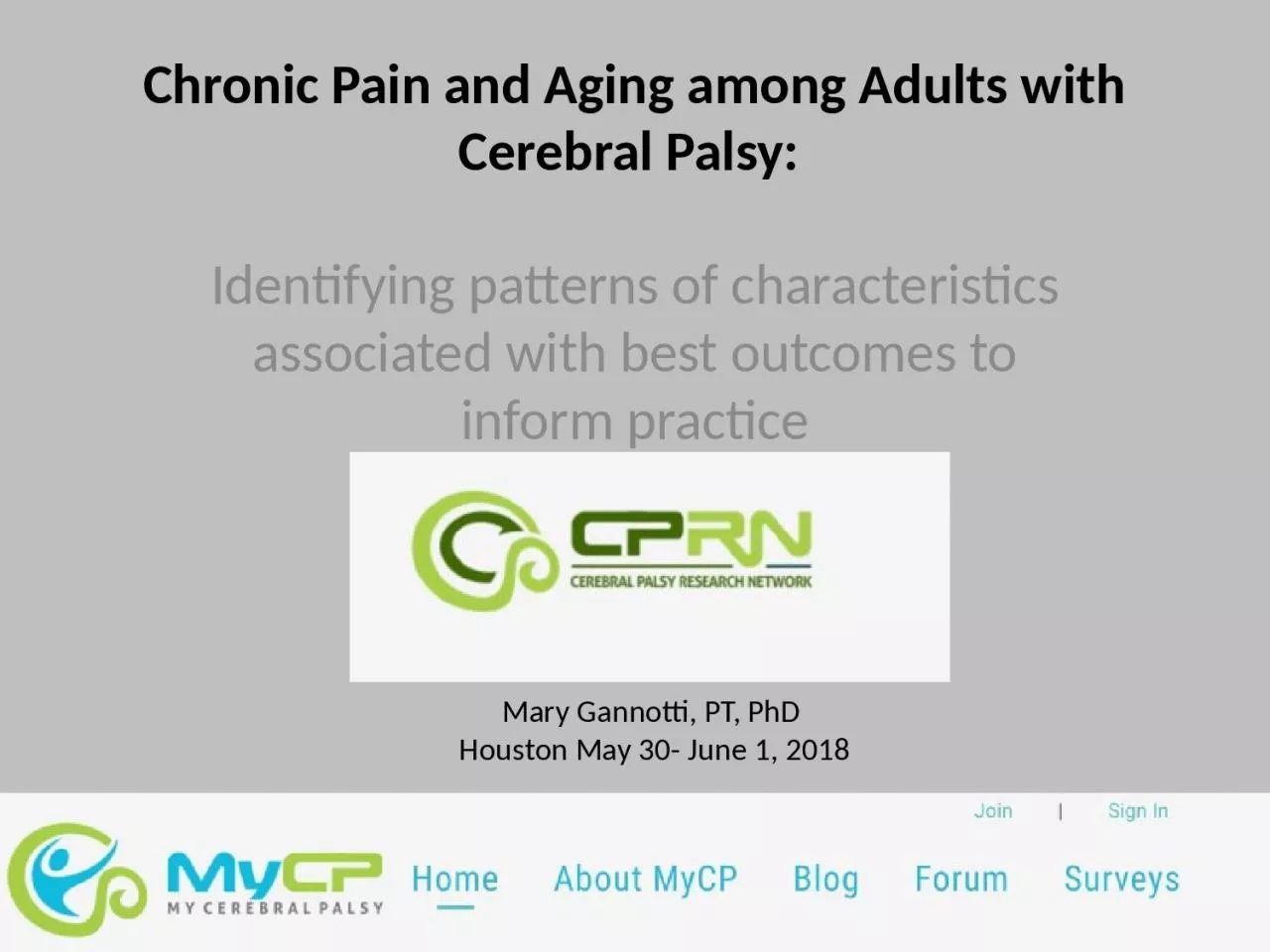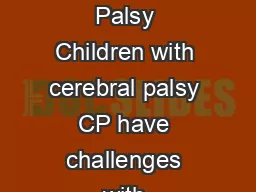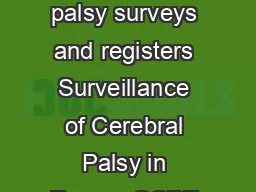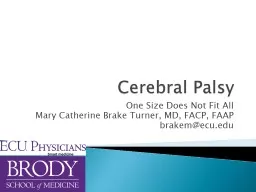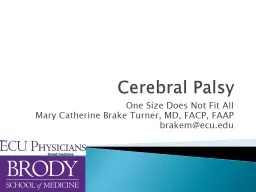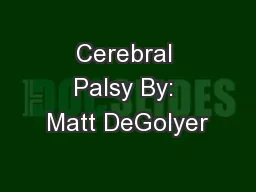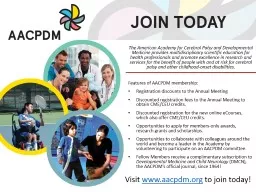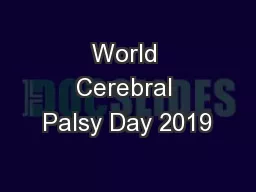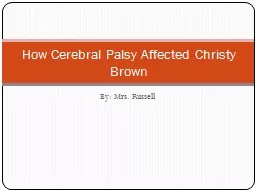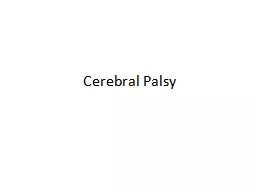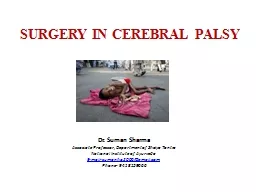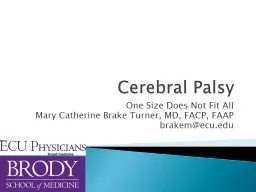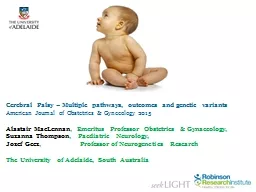PPT-Chronic Pain and Aging among Adults with Cerebral Palsy:
Author : jocelyn | Published Date : 2024-01-29
Identifying patterns of characteristics associated with best outcomes to inform practice Mary Gannotti PT PhD Houston May 30 June 1 2018 Collaborative Effort Mary
Presentation Embed Code
Download Presentation
Download Presentation The PPT/PDF document "Chronic Pain and Aging among Adults with..." is the property of its rightful owner. Permission is granted to download and print the materials on this website for personal, non-commercial use only, and to display it on your personal computer provided you do not modify the materials and that you retain all copyright notices contained in the materials. By downloading content from our website, you accept the terms of this agreement.
Chronic Pain and Aging among Adults with Cerebral Palsy:: Transcript
Download Rules Of Document
"Chronic Pain and Aging among Adults with Cerebral Palsy:"The content belongs to its owner. You may download and print it for personal use, without modification, and keep all copyright notices. By downloading, you agree to these terms.
Related Documents

